The promo film
Having decided that their next single would be the double a-side ‘Strawberry Fields Forever’ and ‘Penny Lane’, The Beatles appeared in promotional films for both songs.Work began on 30 January 1967 in Knole Park in Sevenoaks, Kent. The films were both produced by Tony Bramwell for Subafilms, and were shot on colour 35mm film by a crew from London-based Don Long Productions.
The Swedish director was Peter Goldmann, who had been recommended by Klaus Voormann. Goldmann had arrived in England in early January and looked for suitable locations in London and elsewhere. The first location he decided upon was Knole Park in Sevenoaks, Kent, which was owned by the National Trust. Coincidentally, there is a Knolle Park in Liverpool, just a short distance from Strawberry Field.
The film for ‘Strawberry Fields Forever’ was the first to be shot. A number of sequences were shot around a dead oak tree near the park’s birdhouse. The tree is no longer there.
The Beatles had intended to film a sequence in which Paul McCartney dropped down from a dead oak tree, but poor light meant it was not possible on the first day. That sequence, and several others, was filmed on 31 January, which saw the completion of of the shoot.
In the final edit, the sequence was reversed so it looked as though McCartney leaped into the tree. The planned sequence involved him jumping from the tree and running backwards towards a piano.
During a break in the filming John Lennon bought a circus poster dating from 1843 in an antique shop. The poster, which advertised a circus in Rochdale, subsequently provided the inspiration for ‘Being For The Benefit Of Mr Kite!’ on the Sgt Pepper’s Lonely Hearts Club Band album.
The promo film for ‘Penny Lane’ was shot from 5 February 1967.
The release
The single ‘Penny Lane’/‘Strawberry Fields Forever’ was released in the USA by Capitol Records on 13 February 1967, and by EMI in the UK on 17 February 1967.
It was The Beatles’ first single release since ‘Yellow Submarine’/‘Eleanor Rigby’ the previous August, and the first UK single to be issued in a picture sleeve.
The front of the sleeve showed The Beatles’ new hirsute image, while the back cover showed photographs of all four band members as children.
George Martin later cited the decision to release the two songs as a double a-side as one of his biggest mistakes with The Beatles.
The only reason that ‘Strawberry Fields Forever’ and ‘Penny Lane’ didn’t go onto the new album was a feeling that if we issued a single, it shouldn’t go onto an album. That was a crazy idea, and I’m afraid I was partly responsible. It’s nonsense these days, but in those days it was an aspect that we’d try to give the public value for money.The idea of a double A side came from me and Brian, really. Brian was desperate to recover popularity, and so we wanted to make sure that we had a marvellous seller. He came to me and said, ‘I must have a really great single. What have you got?’ I said, ‘Well, I’ve got three tracks – and two of them are the best tracks they’ve ever made. We could put the two together and make a smashing single.’ We did, and it was a smashing single – but it was also a dreadful mistake. We would have sold far more and got higher up in the charts if we had issued one of those with, say, ‘When I’m Sixty-Four’ on the back.
Anthology
At the time double a-side singles were fairly uncommon, although The Beatles had previously used them for the release of ‘Day Tripper’/‘We Can Work It Out’ and ‘Yellow Submarine’/‘Eleanor Rigby’.
In the United Kingdom, the single failed to top the singles chart – the first time for a Beatles single since ‘Please Please Me’. It was held off the number one spot by Engelbert Humperdinck’s ‘Release Me’.
The Beatles’ long retreat from public life since the release of Revolver, and their decision to quit touring, led to much speculation in the music press that they were to disband.
Furthermore, the failure of ‘Strawberry Fields Forever’ to top the charts caused many to believe that their popularity was declining.
It was pretty bad, wasn’t it, that Engelbert Humperdinck stopped ‘Strawberry Fields Forever’ from getting to Number One? But I don’t think it was a worry. At first, we wanted to have good chart positions, but then I think we started taking it for granted. It might have been a bit of a shock being Number Two – but then again, there were always so many different charts that you could be Number Two in one chart and Number One in another.
Anthology
In the US ‘Penny Lane’ topped the Billboard Hot 100 for one week, while ‘Strawberry Fields Forever’ peaked at number eight. The single also topped the charts in Australia, Canada, Denmark, Malaysia, New Zealand, the Netherlands, Norway, and West Germany.
‘Strawberry Fields Forever’ and ‘Penny Lane’ were both included on the Capitol album Magical Mystery Tour at the end of 1967.
Anthology 2, released in March 1996, contained three versions of ‘Strawberry Fields Forever’: a home demo sequence recorded by Lennon in November 1966; take 1 from November 1966; and take 7 and edit piece.
2006’s Love remix album contained a version of ‘Strawberry Fields Forever’ which charted its development from the demo to final version, including harmony vocals which were omitted from the mix of take 1 on Anthology 2. The end of the Love version included elements from ‘Sgt Pepper’s Lonely Hearts Club Band’, ‘In My Life’, ‘Penny Lane’, ‘Piggies’, and ‘Hello, Goodbye’.
The super deluxe 50th anniversary edition of Sgt Pepper contained takes one, four, seven, and 26 from the original studio sessions; a 2015 stereo mix; and the original mono mix.

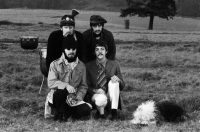
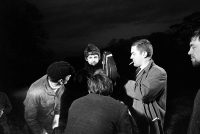
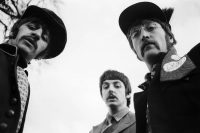

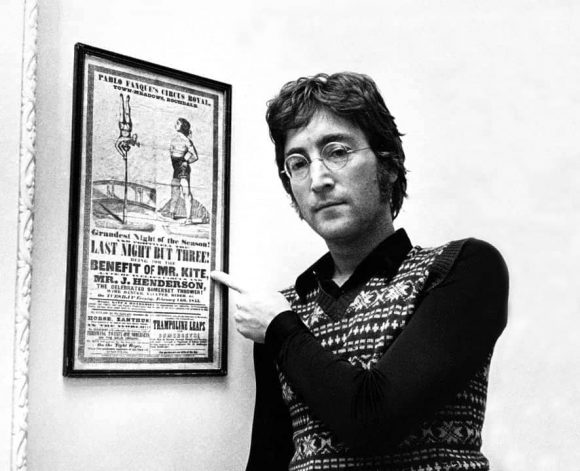
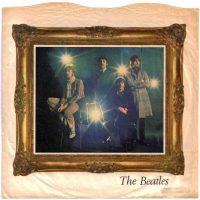

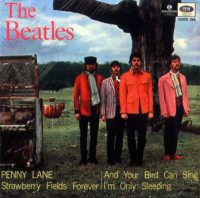
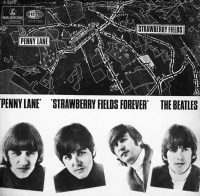
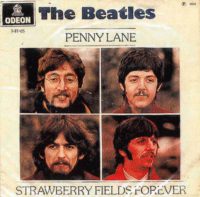
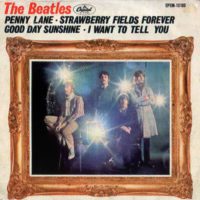

Please could you correct the list of musicians? The ‘cellist listed as John Hall is in fact Joy Hall, a member of the Delmé String Quartet that also included Jürgen Hess and John Underwood both of whom recorded on Beatles tracks.
Thanks,
John